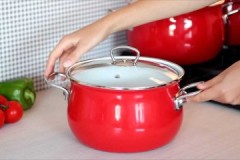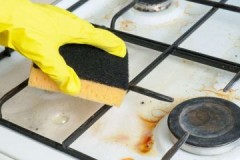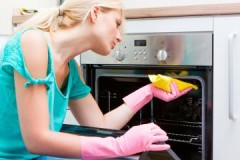Tips from experienced housewives on how to remove carbon deposits from the pan and not spoil it
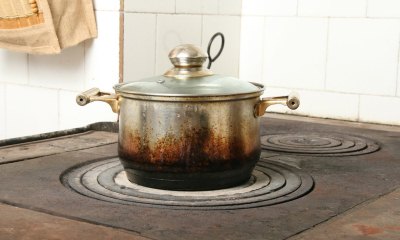 Pans are an integral part of kitchen equipment. For many reasons, carbon deposits can form on them.
Pans are an integral part of kitchen equipment. For many reasons, carbon deposits can form on them.
To remove it and restore the attractiveness of the dishes, you need to know how to clean the burnt places.
In this article, we will tell you how to remove carbon deposits from a stainless steel, aluminum, enamelled pot with the help of folk remedies and special preparations.
Content
How to remove burnt inside with folk remedies?
Simple folk recipes will help to clean carbon deposits at home. To implement them, you will need simple tools that are already at hand.
Mustard powder
Mustard powder can be used successfully to treat carbon deposits in a saucepan made of any material. This product is mild in its effect, effective, harmless and does not have a strong odor.
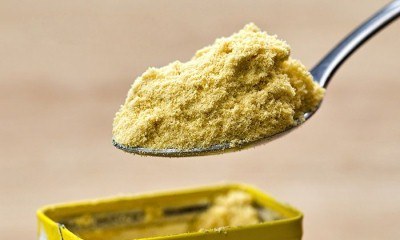 Preparation and use:
Preparation and use:
- Pour 2-3 tablespoons of mustard powder into a container.
- Add as much water as necessary to make a gruel.
- Using a sponge and mustard paste, remove the carbon deposits.
This method will give the best effect after preliminary soaking.
Vinegar and soap
If black carbon appears in the pot, you can clean it with laundry soap and ordinary vinegar. This method is not suitable for all coatings. It is optimal for stainless steel.
The procedure for carrying out work based on the volume of a pan of 3 or 4 liters:
- pour water on 2/3 of the container volume;
- grate laundry soap (50 grams);
- pour soap shavings into the pan;
- pour in ½ cup vinegar;
- put the pan on fire;
- to cover with a lid;
- simmer over low heat for 30-60 minutes.
For high-quality processing, it is advisable to use laundry soap, not toilet soap.
Lemon acid
A harmless pot cleaner from carbon deposits is citric acid.It is suitable both for removing burnt areas and for combating limescale.
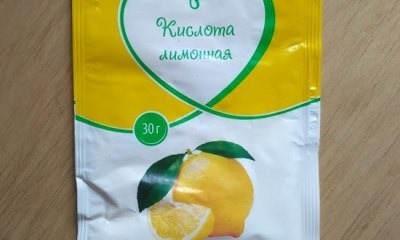 Procedure:
Procedure:
- Pour enough water into a saucepan to cover the carbon deposits.
- Bring water to a boil.
- Pour in a bag of citric acid.
- Boil for a quarter of an hour.
- Pour out the solution.
- Wash the pot with a kitchen sponge.
If the carbon deposit has a thick layer and has been accumulating for a long time, it is advisable to increase the amount of citric acid to 50 grams.
Salt and soda
A recipe based on salt and soda will help to cope with extensive carbon deposits. This method will help even in neglected cases, when the pan has not been put in order for a long time.
Procedure:
- mix salt and soda in a separate container in equal proportions;
- add a little water so that the mixture becomes like a paste in consistency;
- to cover with a lid;
- set aside for a day;
- remove soda and salt with a sponge;
- prepare a new mixture of salt and soda;
- pour into the pan;
- add water to half the entire volume of the pan;
- boil for half an hour;
- set aside to cool;
- drain;
- rinse with dishwashing gel;
- rinse with water.
Milk serum
The method is based on the action of the lactic acid contained in the product. Order of use:
- Pour whey into a saucepan so that the liquid covers the carbon deposits.
- Leave for a day.
- Wash the container with a sponge and dish detergent.
Salt
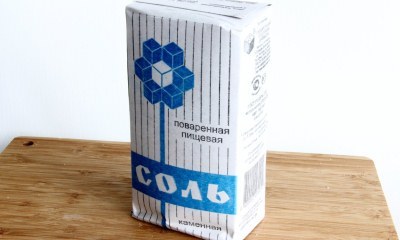 Kitchen salt can give a good cleaning result even without mixing with other substances. For cleaning you need:
Kitchen salt can give a good cleaning result even without mixing with other substances. For cleaning you need:
- moisten areas with carbon deposits with water;
- rub the surface with salt with a sponge or rag so that a damp gruel forms;
- leave the pan for a couple of hours;
- clean areas with carbon deposits;
- rinse the pan.
Rubbing with salt is an abrasive effect that can damage mechanically sensitive coatings.
How do I clean the dishes outside?
Carbon deposits on pans can form not only inside, but also outside... This happens for various reasons - when cooking dishes boil, when food burns and splashes from pans and pots that are used nearby on the stove, etc.
Treatment with special means, as well as digestion of the pan itself, will help to cope with the problem. If the usual reading does not help restore the appearance of the dishes, you will need another saucepan. It should be larger than the victim in size, and allow it to be placed inside.
To remove carbon deposits, prepare one of the cleaning solutions and place one pan in another so that the areas with carbon deposits are in the water.
For these purposes, any of the methods is suitable:
- Aqueous salt solution from a kilogram pack of salt. Boiling is organized for a couple of hours.
- Soda water solution (0.5-1 pack), etc.
How to get rid of burning with special preparations?
To cope with stubborn carbon deposits quickly and simply help special tools. When choosing a drug, you need to pay attention to the following points:
 cost;
cost;- the volume of the bottle;
- composition (it can be biodegradable);
- what material is used for dishes;
- release form (gel, spray, etc.);
- order of use.
It is necessary to apply the funds strictly according to the instructions, and after cleaning, wash off the composition very carefully.
Cleaner Dr. Beckmann
Gel formulation for cleaning ceramic and metal surfaces.
Advantages:
- biodegradable composition;
- directional drug;
- efficiency;
- does not spoil the material;
- has no unpleasant odor;
- gives an aroma of freshness;
- can be used to clean microwaves, stoves, etc .;
- the gel form spreads well over the surface.
Minuses:
- small volume;
- high price.
The price is an average of 350 rubles.
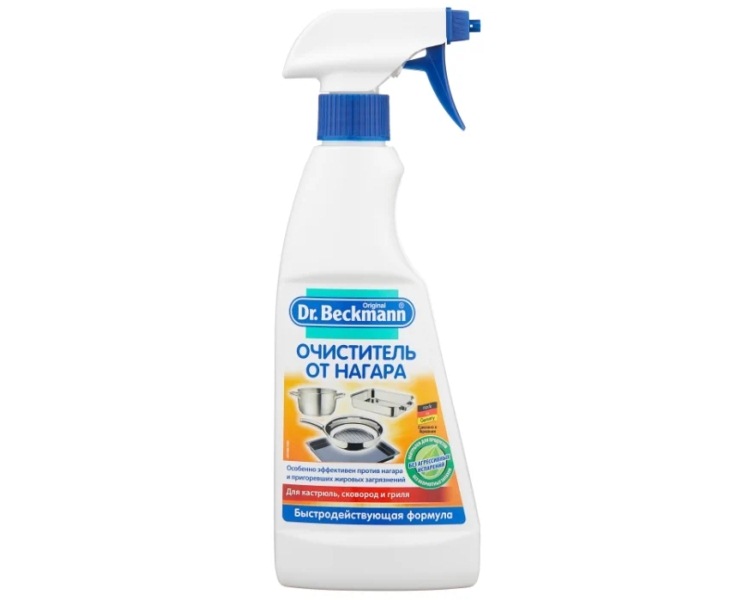
GRIGLIA Strong
The preparation made in the Russian Federation is designed to remove heavy carbon deposits on kitchen utensils, including pots. For cooking utensils, it is used as an ingredient in the preparation of a soaking solution. Proportion: for 1 liter of water - 50 ml of the product. The exposure time is a quarter of an hour.
Advantages:
- efficiency;
- removes old carbon deposits;
- ease of use.
Disadvantages: price... Cost - from 500 rubles.
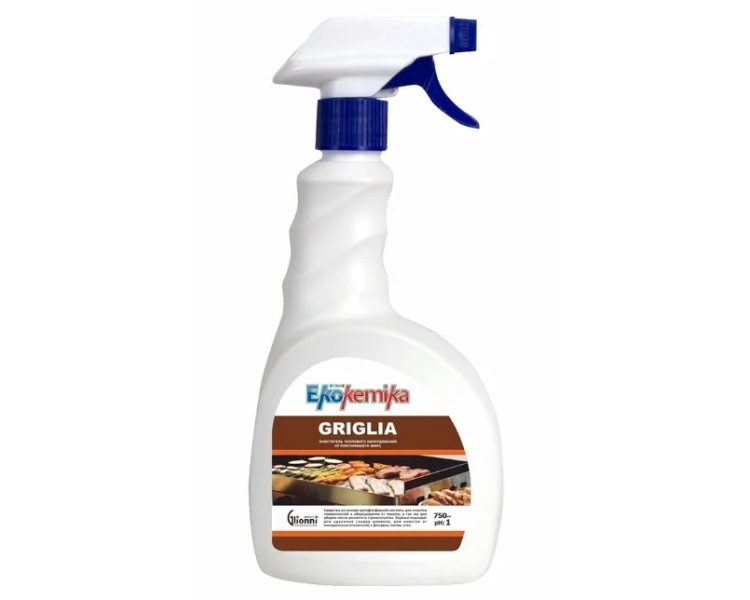
Antiprigar Floreal
The product is available in the form of a spray. Suitable for high-quality cleaning of carbon deposits on the stove, metal dishes and in the oven.
Advantages:
- the product is suitable for removing old dirt;
- efficiency;
- affordable price.
Cons: May not handle burn-in the first time. Price - from 200 rubles per container. Read reviews here.
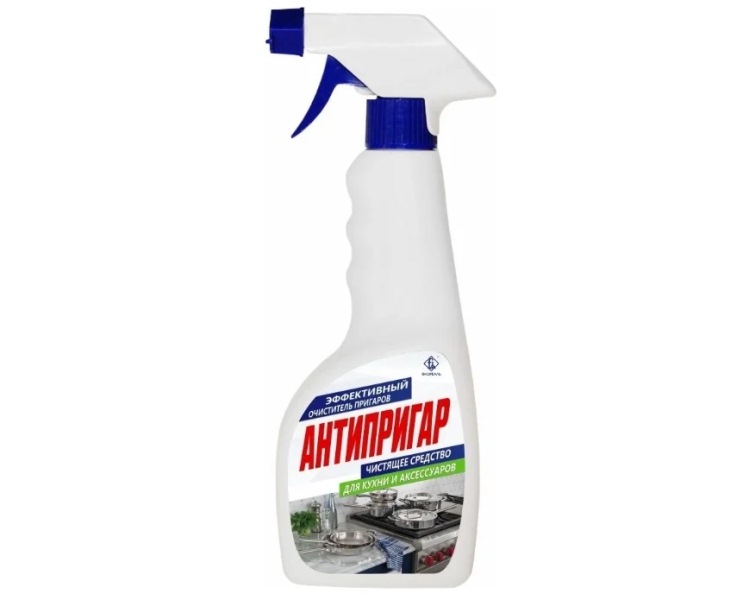
Cleaning features depending on the material of kitchen utensils
Not all specialty and home remedies are suitable for every pot.... Some coatings are highly susceptible to acids, for example. Using an unsuitable cleaning technique can damage the coating material and ruin the pan.
Stainless steel
Stainless steel dishes are shiny and stylish, and very practical. Such a pan serves for a long time.
Recipes allowed with entry:
- acids,
- soda,
- mustard, etc.
Non-stick
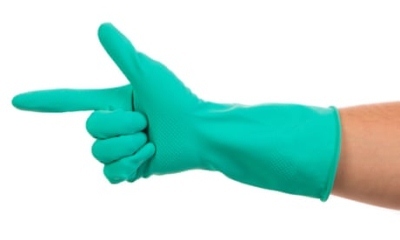 Special non-stick coatings - very sensitive to abrasion and chemicals.
Special non-stick coatings - very sensitive to abrasion and chemicals.
You can tidy up the damaged pan in this way:
- Pre-soak with warm water.
- Use mustard powder recipe for scrubbing.
Soaking is the main action that allows you to remove carbon deposits without the risk of damaging the top layer.
Aluminum coating
Aluminum is a soft material that breaks down on contact with chlorine-containing agents. To remove carbon deposits, acid-containing products, for example, recipes with citric acid, as well as prolonged soaking of the burning layer, are suitable. Due to the nature of the material aluminum should not be rubbed with brushes with abrasive surfaces.
Enamel
When carbon deposits form, the enamel coating must be soaked first. It is not advisable to use compositions with acids for cleaning, as they can destroy the coating. A good choice is recipes based on mustard powder or soda.
What should not be done when cleaning?
When starting cleaning, it is important to remember the following prohibitions and restrictions:
- When cleaning, do not use tools with abrasive surfaces, as this can spoil the appearance, and in some cases (for example, in the presence of a non-stick coating) even lead to damage to the pan.
- Do not use products that are not intended for cleaning pots.
- If only food is burnt in the pan, do not try to completely remove the carbon deposits immediately. The best option is to add water and detergent and let it stand for a couple of hours, in advanced cases, longer. After that, it will be much easier to clean the burnt areas.
Recommendations
Expert advice will help you remove carbon deposits from the pan without damaging it:
- Special spray products should only be used in good ventilation.
 Powdered cleaners can scratch the surface even when a soft sponge has been used. Gel and liquid formulations are preferable in this regard.
Powdered cleaners can scratch the surface even when a soft sponge has been used. Gel and liquid formulations are preferable in this regard.- Before buying household chemicals, you should study not only the procedure for working with it, but also clarify for which surfaces of the dishes the product is intended.
- You should not use a pan with not removed carbon deposits for cooking, as this not only affects the taste of the food, but can also be harmful to health.
- Removing carbon deposits inside and outside the pan is a prerequisite for operation, since it not only maintains the hygiene of the dishes, but also prolongs its service life.
Methods and means of cleaning various surfaces from carbon deposits are presented in given section.
Conclusion
You can remove carbon deposits from the pan at home on your own, using purchased products or by cleaning according to home recipes. In order for the pan to serve for a long time and to look neat, it is better to prevent the buildup of carbon deposits, and to maintain its condition in proper form.

